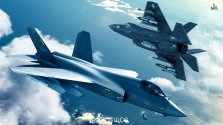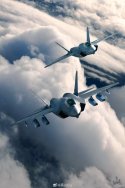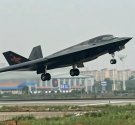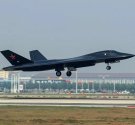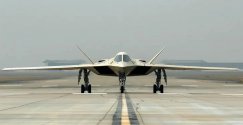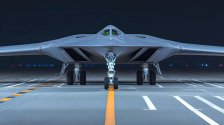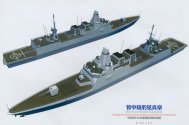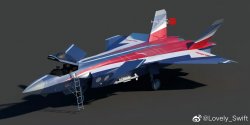You are using an out of date browser. It may not display this or other websites correctly.
You should upgrade or use an alternative browser.
You should upgrade or use an alternative browser.
Fan art, PS and CG images
- Thread starter bd popeye
- Start date
Just in case some overambitious fan-boy claims again these to be real! NO, they are not … Anyway impressive work posted by @地产画匠 on Weibo.
View attachment 127415View attachment 127416
TBF, I don't mind if the H-20 can become some kind of B-2 and B-1B "merger" such that it would have weapons bays that are long enough to carry one or two of the hypothetically smaller variants of the air-launched DF-17/DF-26 that we saw being carried underneath the H-6N's belly just recently.
No need for supersonic speeds, less need to directly reach western CONUS unless during strategic nuclear exchange, but VLO coupled with a large payload capacity would still be paramount.
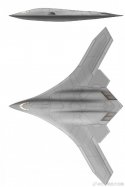
Of course, this would require the prerequisite of JH-XX existing at the same time as the H-20 to be met. One would be more focused on the tactical spectrum, while the other would be more geared towards the strategic spectrum.
But meh, that's just my own fan-made fantasy of what China's future bomber fleet should look like, lol.
Last edited:
can this design is achievable now ? this looks really futuristicTBF, I don't mind if the H-20 can become some kind of B-2 and B-1B "merger" such that it would have weapons bays that are long enough to carry one or two of the hypothetically smaller variants of the DF-17/DF-26/DF-27 that we saw being carried by the H-6N recently. No need for supersonic speed, but VLO would still be paramount.
View attachment 127417
Of course, this would require the prerequisite of JH-XX existing at the same time as the H-20 to be met. One would be a more focused on the tactical spectrum, another would be geared towards the strategic spectrum.
But meh, that's just my own fan-made fantasy of what China's future bomber fleet should look like, lol.
can this design is achievable now ? this looks really futuristic
TBH, that CGI which I posted above is largely similar to other CGIs of the H-20 available on the internet, including this one from a Chinese military magazine (which is what most netizens tend to associate with when talking about the H-20):
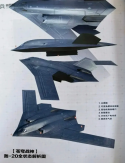
However, most of the H-20's CGIs available differs quite a significant degree to how the B-2 and B-21 look like, mainly on how the leading edges of the American VLO bombers are in simple straight lines originating from the nose, which is obviously contrasting to the leading edges of most H-20 CGIs that have increasingly larger angle relative to the longitudinal axis of the aircraft as the leading edges get further away from the nose:
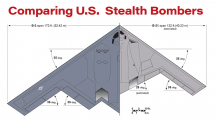
I believe there are good reasons for why Northrop Grumman engineers chose such designs for their VLO bombers, and I believe that the engineers working on the H-20 at Xi'an AC should understand them as well.
However, doing so clearly reduces the overall length of the VLO bombers, which directly contributed to the significantly reduced length of the weapons bays on them compared to their non-VLO counterparts i.e. the B-1B, thus massively constraining the size of payloads that the B-2s and B-21s are able to carry. This is also among the reasons why the USAF is still keen on retaining the B-52s in active service for another few decades or so - Mainly as missile trucks for missiles that are too large to be fitted inside the weapons bay of their VLO bombers.
In the meantime, given how China have 100+ H-6K/J/N bombers in active service with the PLAAF right now, of which the oldest airframes can still serve for at least another 10-15 years - Having a new bomber which has to be able to carry large-sized missiles may not be a need that is as pronounced for the PLAAF as compared to the USAF.
Despite this, if the Xi'an AC engineers want the H-20 to be able to take over such roles from the H-6K/J/Ns as they approach retirement ages in the future - Barring the leading edges designs from the CGIs above, they could also straighten out the leading edges of the H-20 based on the CGIs above, which would result in something that somewhat resembles the #4 design (represented by Model D) in this extract taken from an academic paper conducted some years ago on various design possibilities of a new bomber type:
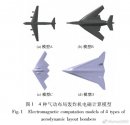
Which actually approaches to what 6th-gen fighters are typically being envisioned today (i.e. "Flying Doritos"), rather than the B-2 and B-21 designs (represented by Model C).
Of course, if Xi'an AC engineers are able to design the H-20 that aren't just VLO and able to travel in high-subsonic speeds, but also have a large payload capacity, then a H-20 design which resembles the CGI in my previous post or the Model D should do, IMHO.
Last but not least - I am no aeronautics engineer.
Last edited:
An artistic illustrative poster of CV-18 Fujian, posted by the official social media account of the Ministry of State Security of the PRC.
For those who are wondering about the Lebanese national flag on the left of the UN flag: China does have peacekeeping forces stationed in Lebanon under the United Nations Interim Force in Lebanon (UNIFIL).

For those who are wondering about the Lebanese national flag on the left of the UN flag: China does have peacekeeping forces stationed in Lebanon under the United Nations Interim Force in Lebanon (UNIFIL).


